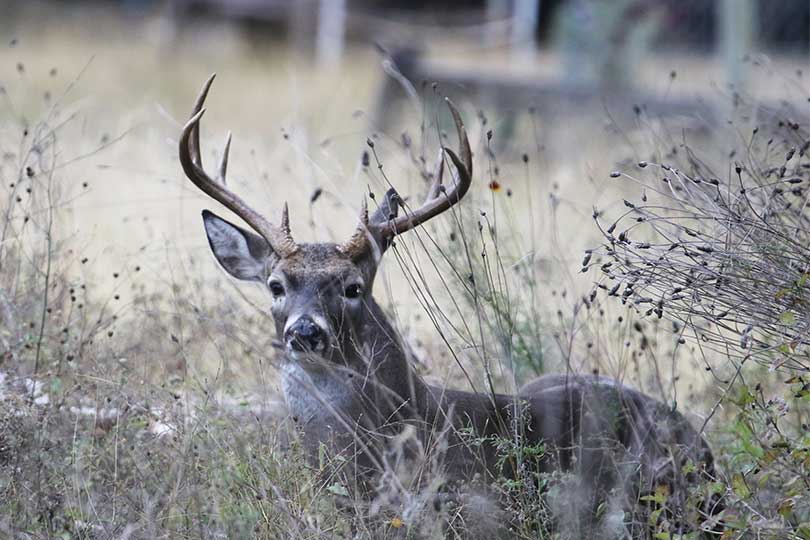By Jessica Domel
Multimedia Reporter
A program that offers liberal bag limits, an extended deer hunting season and valuable opportunities will soon cost Texas landowners $30 or $300, depending upon their program selection.
The Texas Parks and Wildlife Commission has approved a fee structure for its Managed Lands Deer (MLD) Program.
“We’ll use the revenue generated from the fee to fund biologist positions,” Alan Cain, Texas Parks and Wildlife Department (TPWD) white-tailed deer program leader, said in an interview with the Texas Farm Bureau Radio Network. “There was a rider associated with some legislation this past session that directs that money to be used specifically for MLD.”
Participation in MLD is currently free.
Under the new fee structure, cost is $30 per management unit for those enrolled under the harvest option.
“The harvest option is the automated self-serve option,” Cain said. “It doesn’t require as much assistance from our Parks and Wildlife biologists.”
For those enrolled in the conservation program, cost is $300 per management unit within a property that’s enrolled.
Cost is $300 for the first unit within a multi-unit ranch and then $30 for each additional unit.
“If you’re a ranch that has multiple high-fence pastures, it’d be $300 for the first pasture, and then $30 for each additional pasture,” Cain said. “Under the conservation option for aggregate properties, it would just be a flat $300 fee.”
About 83 percent of properties enrolled in MLD are under the conservation option, which provides customized one-on-one assistance from TPWD staff.
“If you’re under the conservation option, and you’re a member of the wildlife management cooperative or association, it’s just a $30 fee for each management unit that a landowner has,” Cain said.
The conservation option includes tag issuances for each property.
Landowners must have a wildlife habitat plan, conduct population surveys and improve wildlife habitat.
The program began in the late 1990s and has grown since then, sparking the need for additional biologists to serve those involved in the conservation option.
“Back in 1998, we had about 800 properties and three million acres enrolled in MLD,” Cain said. “Fast forward to 2019, we have over 12,000 tracts of land and 28 million acres enrolled in MLD.”
Since 2000, the department has not created any new biologist positions or hired additional biologists to address the workload created by MLD’s growing popularity. An advisory committee suggested the fee structure to pay for new biologists.
“Our biologists will spend time with anybody, regardless of what option you’re on as far as MLD or even if you’re not in the MLD program,” Cain said. “We provide technical guidance services free of charge, but folks under the conservation option receive customized harvest recommendations and habitat management recommendations from our staff.”
The primary intent of MLD is to foster and support sound management and stewardship of native wildlife and wildlife habitat on private lands in Texas.
“Ultimately, when you’re looking at habitat management on 28 million acres of land out there, it certainly benefits the wildlife and those landowners who have those properties, but it also benefits everybody in the state,” Cain said.
TPWD will begin collecting MLD fees in April 2021.
Current MLD participants who have questions about the fees for their management unit are encouraged to reach out to their TPWD biologist.

